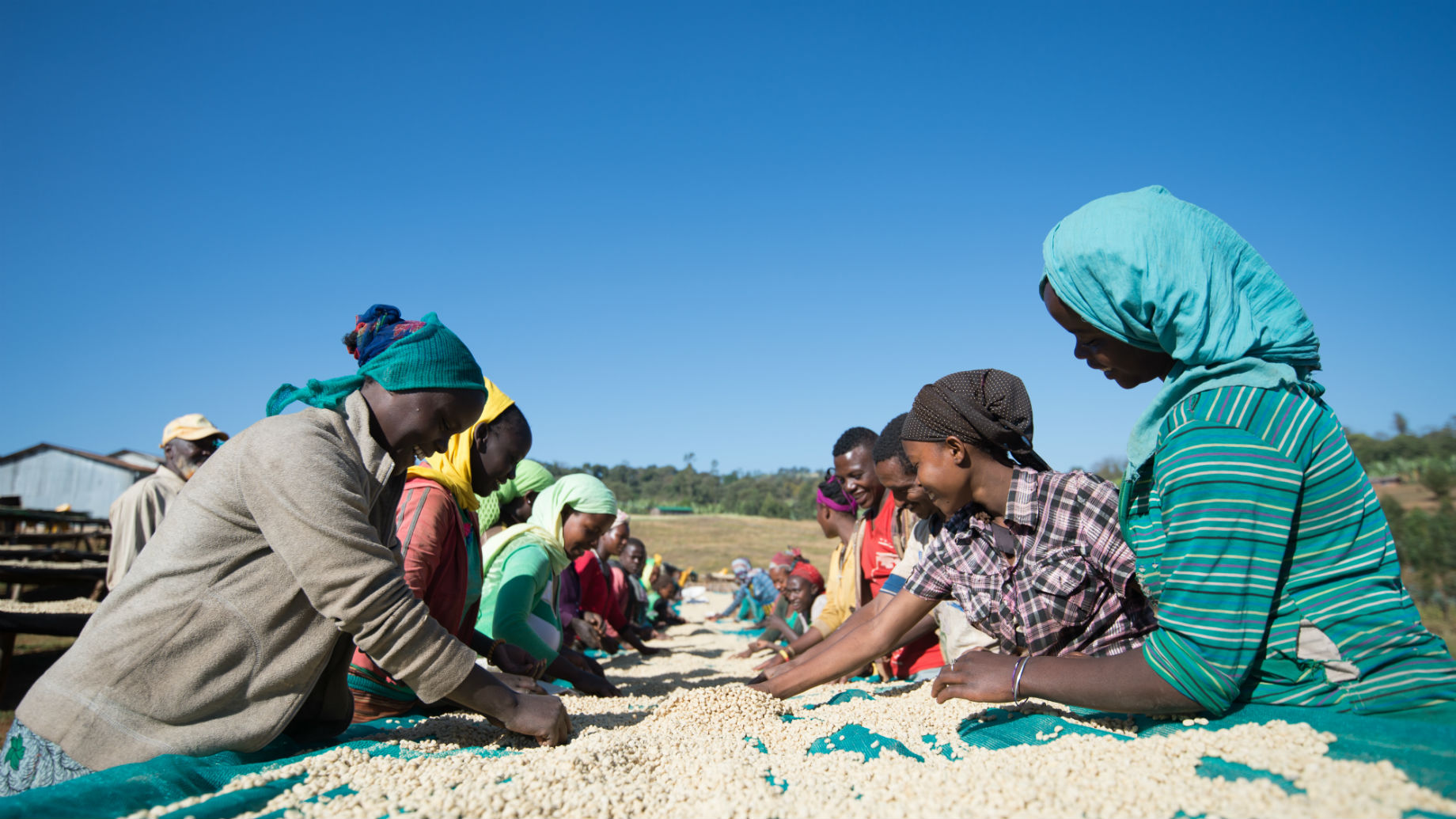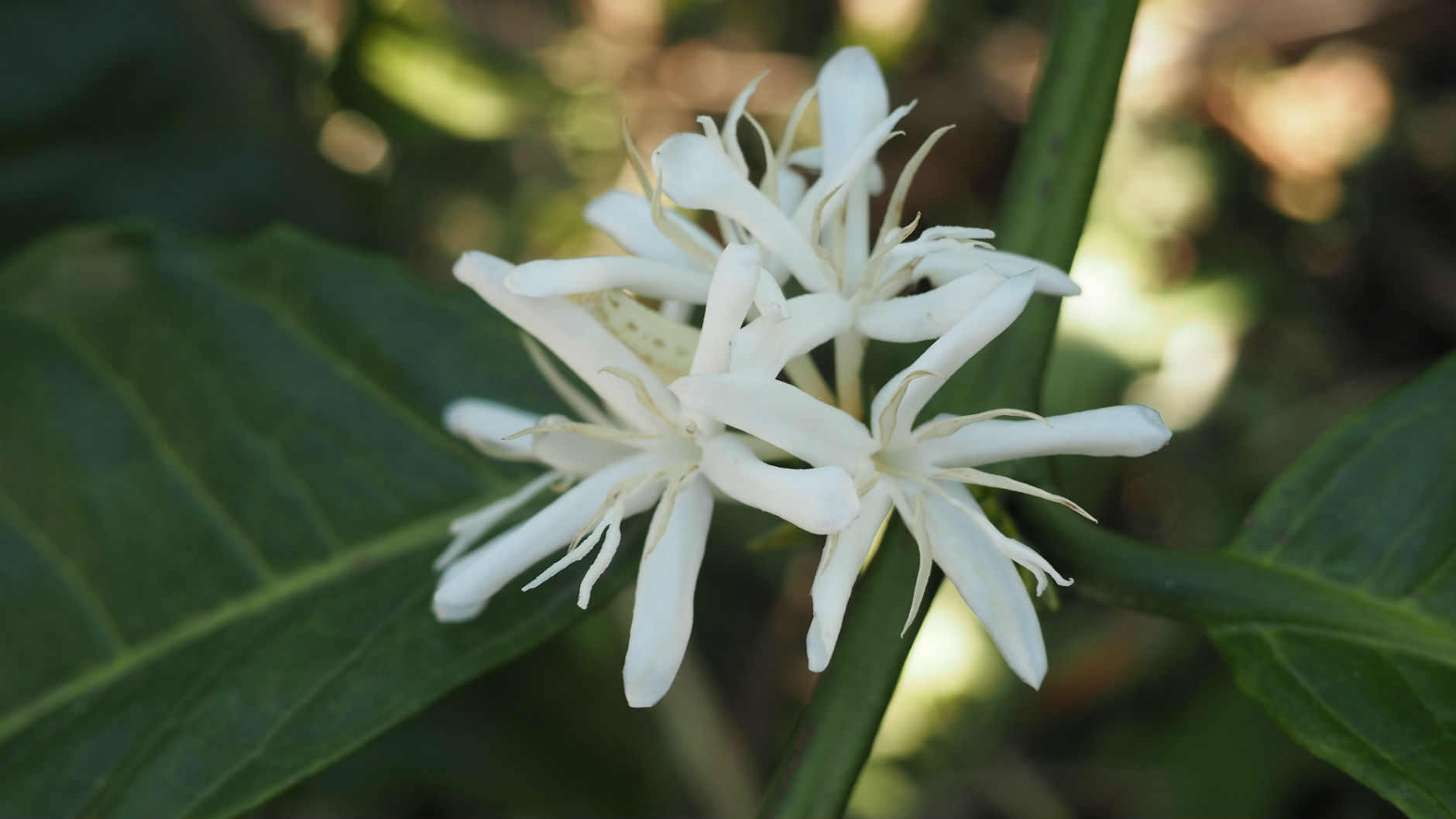Ethiopia Tomme Feku Jiberil Double Washed Crown Jewel
Boxes 0
Warehouses Oakland
Out of stock
Intro
Our first container of Grade 1 Ethiopian coffees has landed and we are super stoked to put these coffees out into the hands of eager roasters. This season especially has seemed difficult for us to filter through mediocre washed selections to really find the gems that warrant attention and merit the G1 designation for spectacular washed Ethiopian coffees.
The effort and wait has been worth it, though, for coffees like this from the town of Tomme in the Guji zone. Feku Jiberil owns a washing station there, where he works with a group of about 600 smallholders to process their coffees traditionally with a long underwater fermentation and post wash soak.
Guji is part of Ethiopia’s largest region, Oromia, and it shares a border with the Gedeo Zone – home to Yirgacheffe town – and offers many similar cup characteristics with their own regional idiosyncrasies. Tomme town is part of the Uraga woreda, which borders the Gedeb & Wole woredas of Gedeo on the west, and Hambela Wamena to the south.
The coffee shows off plenty of floral character, ranging from bergamot on the citrusy side to honeysuckle and basil on the herbal side of the spectrum. There’s a slight savory fruit note like jackfruit or chili mango that’s layered on top of a solid peach/pear baseline. It’s an enjoyable cup with an effortless kind of chuggability to it and a nice range of available flavors depending on your selected level of roast.
Green
This washed Guji is very classic in terms of its physical specs. Smaller than average screen size accompanied by very high density and low moisture and water activity figures. Nothing too surprising here.
Ethiopia is home to the greatest genetic diversity on the planet, and wild coffee can be found in forests throughout the country. Less well known, but recently highlighted by Getu Bekele and Timothy Hill in their recent publication for Counter Culture, the Jimma Agricultural Research Center was instrumental in selecting, breeding, and distributing scores of cultivars throughout the country in the decades following Haile Selassie’s downfall. These have included region-specific varieties, specialty cultivars, and hybrids and wild selections made for disease resistance.
Taste
Ikawa
Developing Ikawa profiles can be a lot of fun, especially when creating set points. The roaster is capable of extremely short drying times that are not really transferable to drum roasters. In order to see a curve that would more typically occur in a drum roaster, you will need to set a forced turning point. This will not only set the turning point for you, but will tell the machine how quickly you want the temperature to rise.
Ikawa Roast (1) is my normal light sample roast. It is on the short side, so it works best with smaller screen sizes and higher density coffees. Just for kicks, I decided to remove my forced turning point temperature setting for Ikawa Roast (2). The coffee did turn around at the same time and temperature that I had previously programmed, but it also shot straight up to borderline yellowing in less than a minute. While I detected a small amount of toastiness in the finish, the overall cup profile was pretty similar. The forced turning point elimination resulted in a shorter drying stage and interestingly, a higher first crack temperature. I am not sure why this happened exactly, but it did occur with all three Ethiopian coffees I roasted this week, whether they were wet or dry process.
Probatino
This was a very friendly coffee to roast with spectacular florals and sweet stone fruit in the cup. Although this coffee is fairly dense, it took the heat well and there was no plunge in drum temperature after first crack. Because of my small batch size I was able to use a lower charge temperature and did not add more heat until almost 2 ½ minutes into the roast. This single adjustment sustained enough energy to reach first crack and carry the coffee into post crack development at a very steady and desired rate. I only reduced the heat ever so slightly at the very end of the roast. In the trier, I could smell toasted marshmallow and a sweet citrus bouquet and I knew I was done.
Brew
Chris mentions above that this coffee is “chuggable”; I would go one step further and say that it’s straight up yummy. Offering the kind of complexity that the best washed Ethiopias are known for, it can produce bright tropical notes, stone fruit syurpiness, classic white florals, and delicious butterscotch. I started with my standard brew recipe, a 1:16 ratio at grind size 8 on our EK43 with 100g pulse pours. This created a brew bed that got choked with fines and made me even more interested to try to the Kruve sifter, but the cup was simply spectacular. Full of sweet florals like rose and jasmine balanced by black tea and caramel and an overwhelming tropical citrus note of star fruit and lemon curd, it was really outstanding.
I’ve been experimenting with the Kruve sifter, which allows a barista to sift ground coffee through micron screens in order to control the exact particle size of the coffee. Whereas normal brewing incorporates fines that get immediately over extracted and boulders which will never be fully penetrated by the brew water, limiting particle size to something a little more uniform can make a barista feel more confident about being able to extract each grain of ground coffee to the same degree.
Using the 400μm and 1200μm filters, I ground 40g of coffee on setting 8 directly into the Kruve and agitated it for about 3 minutes. This resulted in 9.5% boulders and 9.25% fines, with the remaining 81.25% of the grounds sitting between the two filters. The two screen sizes I used were faily far apart – Kruve suggests using the 400 and 900μm for drip coffee. However my intention was simply to remove the biggest boulders and the smallest fines, so that the majority my ground coffee would end up between the two filters.
With these uniform coffee grounds, I set up the same brew recipe: 25g of coffee in and 400g out with 100g pulse pours. The resulting cup had much more butterscotch than the previous iteration, but the tropical fruit notes had turned into yellow floras and lemon curd, with a faint hint of ginger and cardamom. Another example of how much these amazing coffees from the Guji zone have to offer.




